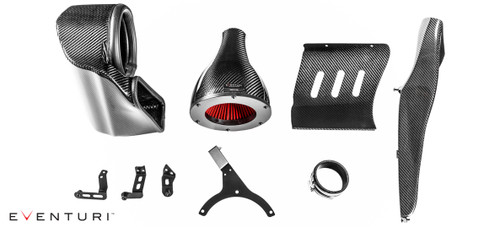 WARNING: This product can expose you to chemicals that are known to the State of California to cause cancer, birth defects or other reproductive harm. For more information, visit www.P65warnings.ca.gov.
WARNING: This product can expose you to chemicals that are known to the State of California to cause cancer, birth defects or other reproductive harm. For more information, visit www.P65warnings.ca.gov.The Audi C7 RS6/RS7 Eventuri intake sets a new benchmark for intake design on this platform. It was developed to achieve two objectives 1) De-restrict the turbo inlet paths. 2) Maintain low inlet temperatures. The first objective was met by providing each turbo with a separate filter and Venturi stack in order to reduce drag and allow the turbos to work more efficiently. The second objective was met by enclosing the filters inside a carbon airbox and feeding them with an additional scoop added behind the front grill. The C7 RS6/RS7 engine bay has multiple heat sources from different directions so a simple configuration of open filters and shields would result in higher IAT values. Our carbon airbox enclosure has been designed to maximise the use of the available volume and block all sources of heat. The resulting performance gains and aesthetics are industry leading for the C7 RS6/RS7.
Audi C7 RS6 RS7
Performance Gain: 15-19hp, 13-17ft-lb
V-Box Acceleration : 60-130mph Reduced By 0.4 Seconds
The Audi C7 RS6/RS7 Eventuri intake sets a new benchmark for intake design on this platform. It was developed to achieve two objectives 1) De-restrict the turbo inlet paths. 2) Maintain low inlet temperatures. The first objective was met by providing each turbo with a separate filter and Venturi stack in order to reduce drag and allow the turbos to work more efficiently. The second objective was met by enclosing the filters inside a carbon airbox and feeding them with an additional scoop added behind the front grill. The C7 RS6/RS7 engine bay has multiple heat sources from different directions so a simple configuration of open filters and shields would result in higher IAT values. Our carbon airbox enclosure has been designed to maximise the use of the available volume and block all sources of heat. The resulting performance gains and aesthetics are industry leading for the C7 RS6/RS7.
The Eventuri Difference
The C7 RS6/RS7 Eventuri system uses 2 Venturi stacks mounted to the filters which smoothly transition to the turbo tubes. These provide an aerodynamically efficient airflow path from the filters to the turbos. Not just another cone filter with a heat shield but a unique design which invokes the Venturi affect and allows laminar flow to be maintained throughout the tubing, reducing the drag on the turbos.
Extensive testing was carried out on this system both on the Dyno and road. Firstly the dyno tests were carried out showing an impressive gain of approximately 19hp and 17ft-lb of torque. This translates on the road to increased part throttle and full throttle response with the car pulling much more eagerly to the redline. The testing was done on the same day back-to-back and temperatures were monitored to ensure consistency. The car was tested firstly with the stock intake - hood closed. We then left the car on the dyno and installed the Eventuri. The car was then run again - hood closed. Several runs were carried out with both configurations to get a consistent result.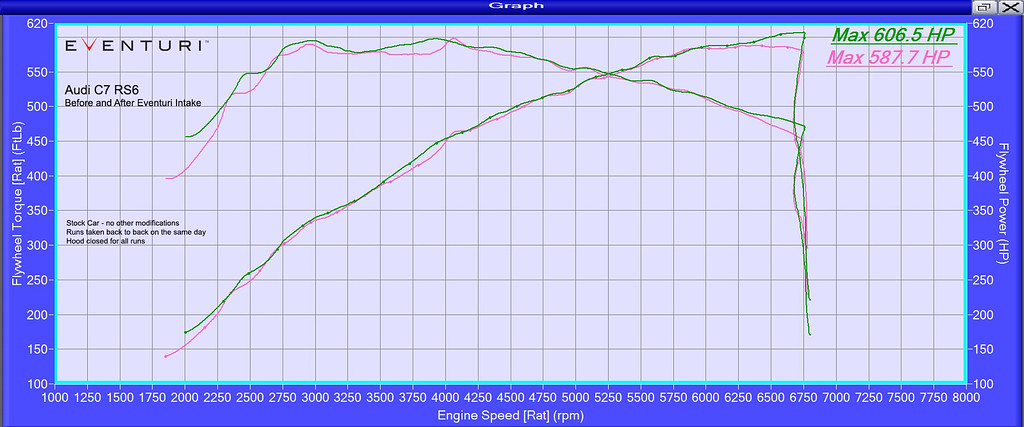
We then took the car for some road testing using a Vbox unit to record the acceleration from 60-130mph (also 100-200Km/h). Testing was carried out on the same stretch of road - again on the same day to keep variables minimum. Results show that with just the intake added, the acceleration times from 60-130mph and also 100-200Km/h reduced by 0.4 seconds which is a significant change at such speeds.
Acceleration results summary:
- 60-130mph with Stock intake = 9.674 seconds
- 60-130mph with Eventuri intake = 9.274 seconds
- 100-200Km/h with Stock intake = 8.420 seconds
- 100-200Km/h with Eventuri intake = 8.078 seconds
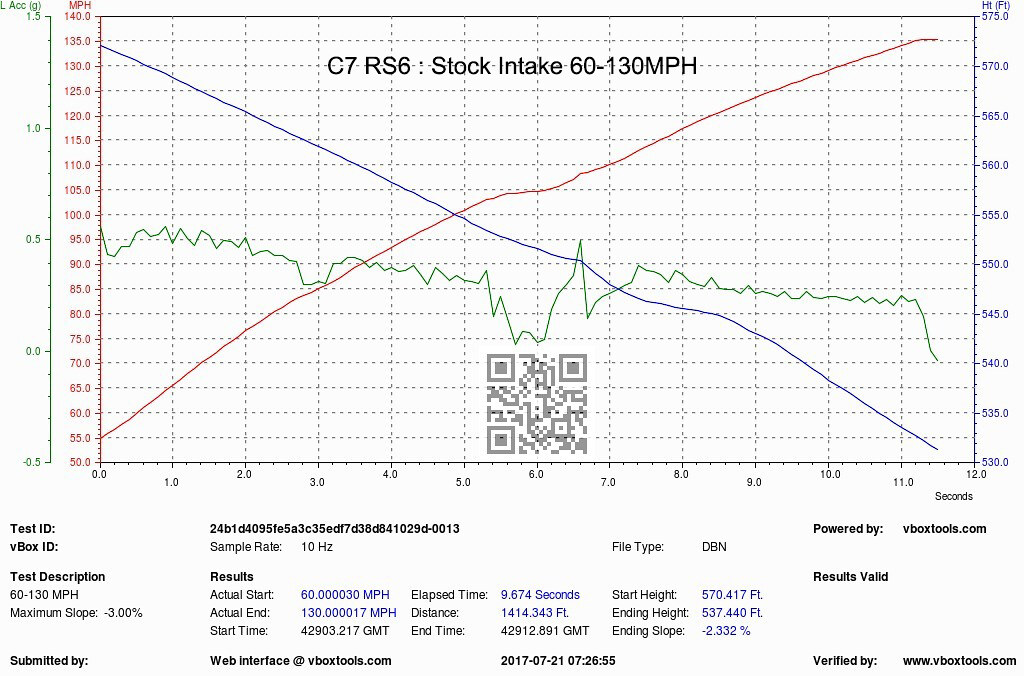
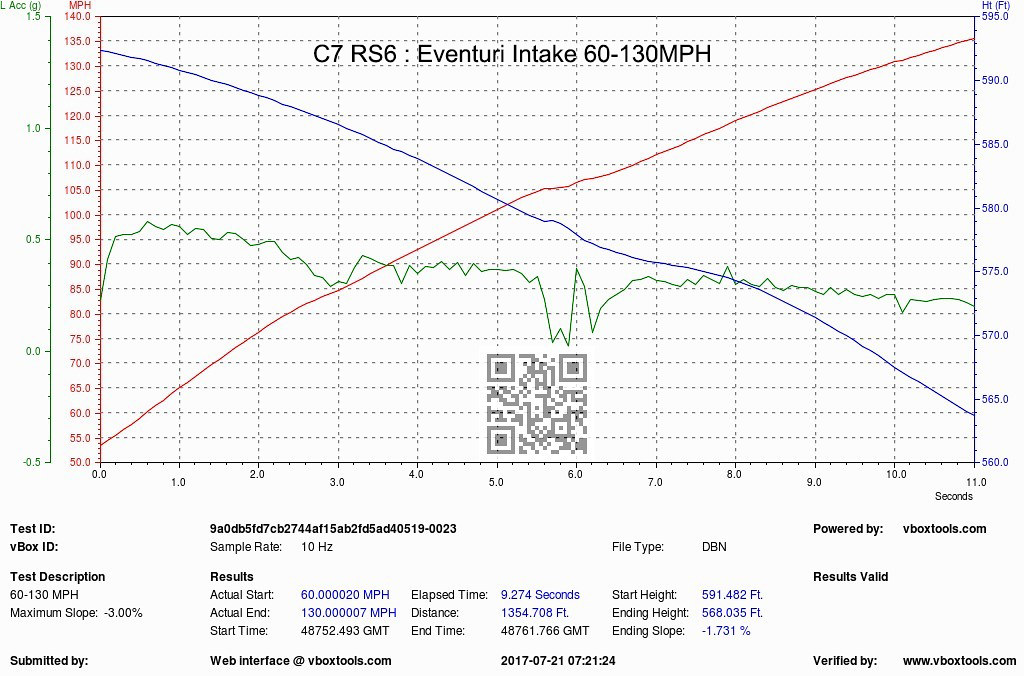
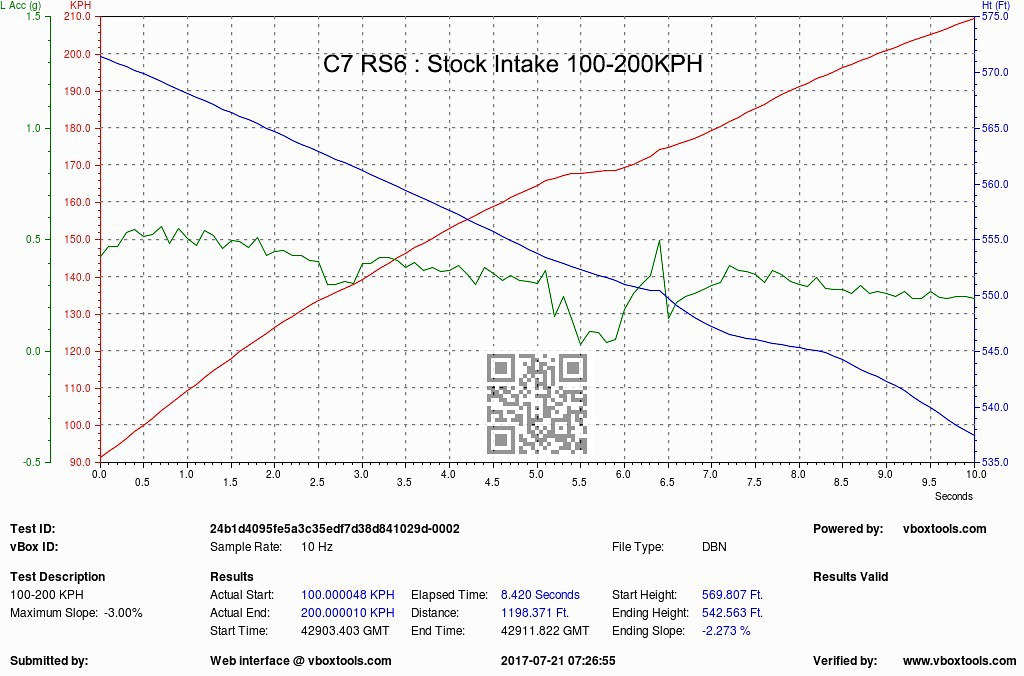

- PDP tag:
- Free Shipping*
- Sale:
- On Sale
- pdp tag:
- On Sale









